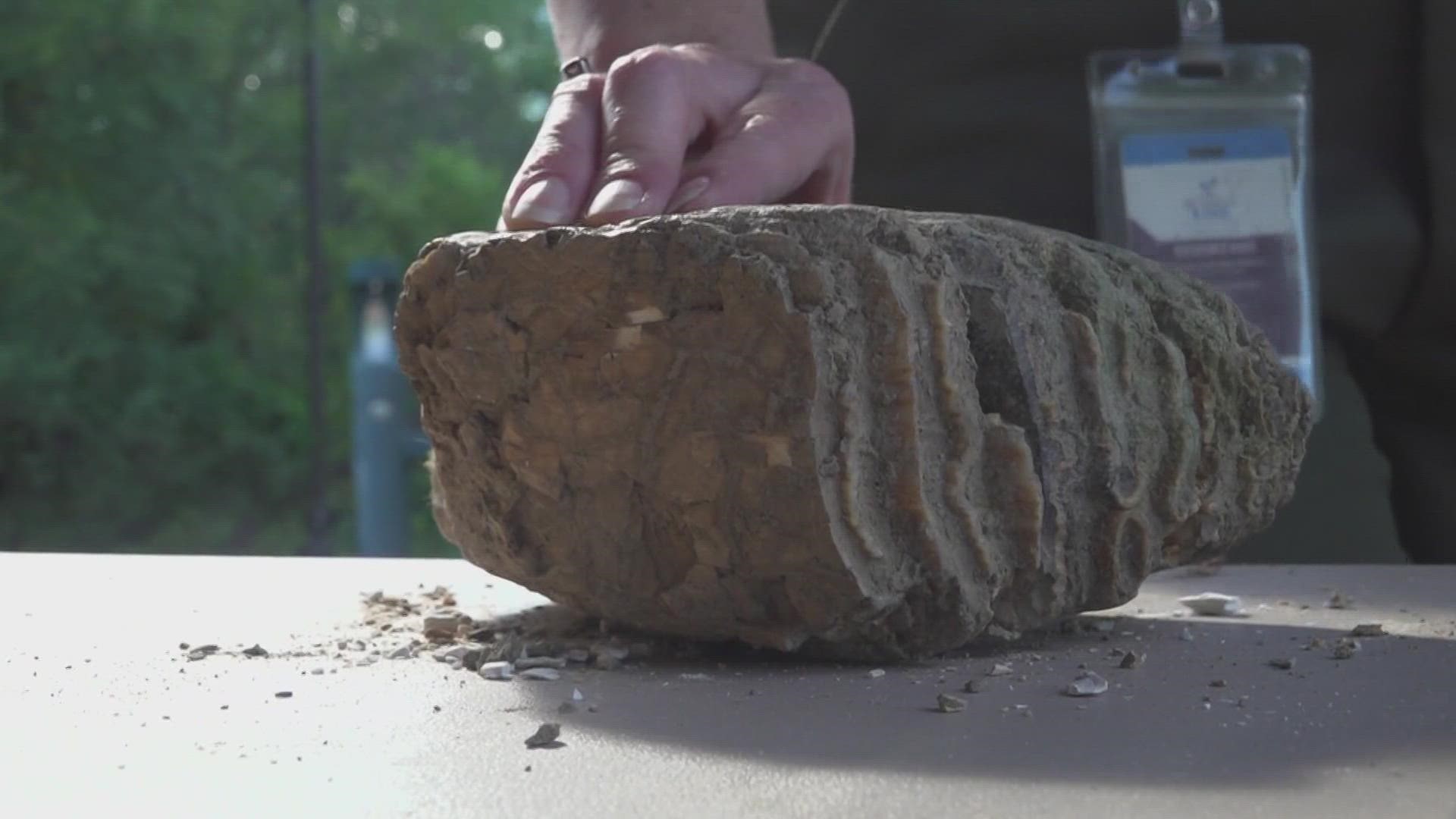WALES, UK — On a summer day in Wales, the footprints of a young girl met those that had been left there over 200 million years ago.
10-year-old Tegan was on a stroll along a beach on the South Wales coast with her mother when she came across a find millennia in the making, five enormous footprints believed to have been left by a dinosaur, reported the British Broadcasting Corporation (BBC).
According to the BBC, paleontologists believe the footprints, which are up to 30 inches apart, were made by a "huge" herbivore called a camelotia in the late Triassic period, and there are currently efforts to get them verified.
National Museum Wales palaeontology curator Cindy Howells reportedly told Tegan and her mother she is "fairly certain they are genuine dinosaur prints".
"We've got five footprints and we're talking about half-to-three-quarters of a metre between each one," Howells told the BBC's The Dinohunters program. "These footprints are so big, it would have to be a type of dinosaur called a sauropodomorpha."
"It was so cool and exciting," Tegan told the BBC. "We were just out looking to see what we could find, we didn't think we'd find anything. We found these were big holes that looked like dinosaur footprints, so mum took some pictures, emailed the museum and it was from a long-necked dinosaur."
Howells was reportedly convinced the tracks were real because of their consistent stride pattern.
"If they were random holes, we'd be wary but because we have a left foot, a right foot and then a left and another right... there's a consistent distance between them," Howells said. "It's quite a significant find - the buzz you get when someone contacts us with a definite dinosaur find, it's amazing."
According to the BBC, camelotia is a dinosaur from the sauropod family, which also included dinosaurs like the brachiosaurus and diplodocus.
"A camelotia would have stood about 3m (10ft) tall, 4-5m (13-16ft) long and is an early sauropodomorph with a relatively long neck, long tail and walked on two legs but could walk on all four when grazing for food," Howells said.
"It's hard to comprehend you're walking on the same beach that hundreds of millions of years ago some massive prehistoric animal was here," Tegan's mother Claire said. "You can spend a lifetime looking for dinosaur treasures so for it to happen for Tegan at this age is great."
More from 6 News:

